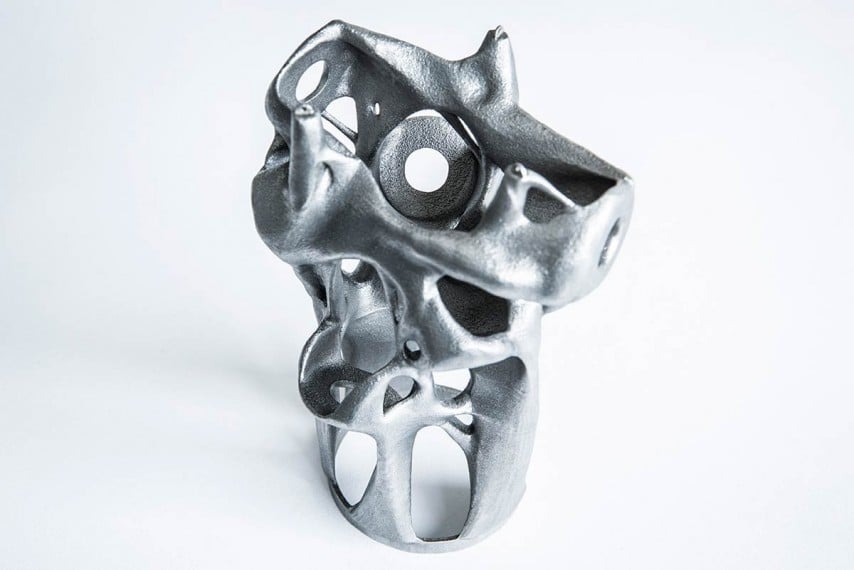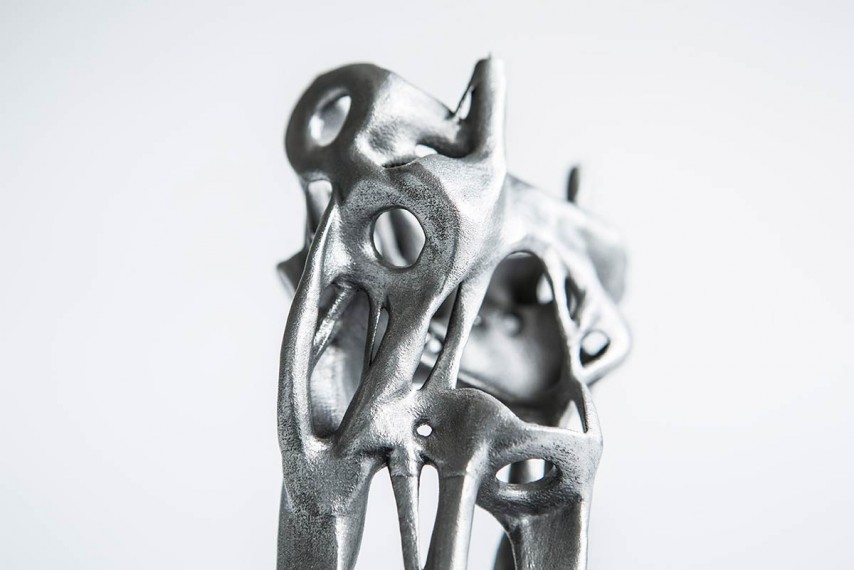
A photograph released by Arup engineers for the first time reveals the future potential of 3D printing for the construction and manufacturing sectors.
The image graphically illustrates how 3D printing – more accurately known as additive manufacturing – can enhance the design and production process to the point that the weight and resulting cost of future construction materials could be reduced significantly.

©Davidfotografie/Arup
The three structural elements shown are all designed to carry the same structural loads and forces. The difference is that the far smaller item on the right is designed using the very latest optimisation and manufacturing methods applied by Arup.
Team Leader at Arup, Salomé Galjaard, pointed out that this is not only an exciting development for the construction sector, but many other industries as well.

In the case of this particular piece, the height is approximately half that of one designed for traditional production methods, while the direct weight reduction per node is 75%,” said Galjaard. “On a construction project that means we could be looking at an overall weight reduction of the total structure of more than 40%. But the really exciting part is that this technique can potentially be applied to any industry that uses complex, high quality, metal products.

The additive manufacturing approach means that manufacturers can create highly complex, individually designed pieces and print them directly in metal. This in itself has tremendous implications for reducing costs and cutting waste. But the latest advances in the design techniques explored by Galjaard’s team mean that far smaller, lighter elements can deliver the same function and strength as those created by traditional methods.
“We have been working on this for some time now and we’re really excited about how fast we’re progressing,” said Galjaard. “We’re really pushing the boundaries here.”






